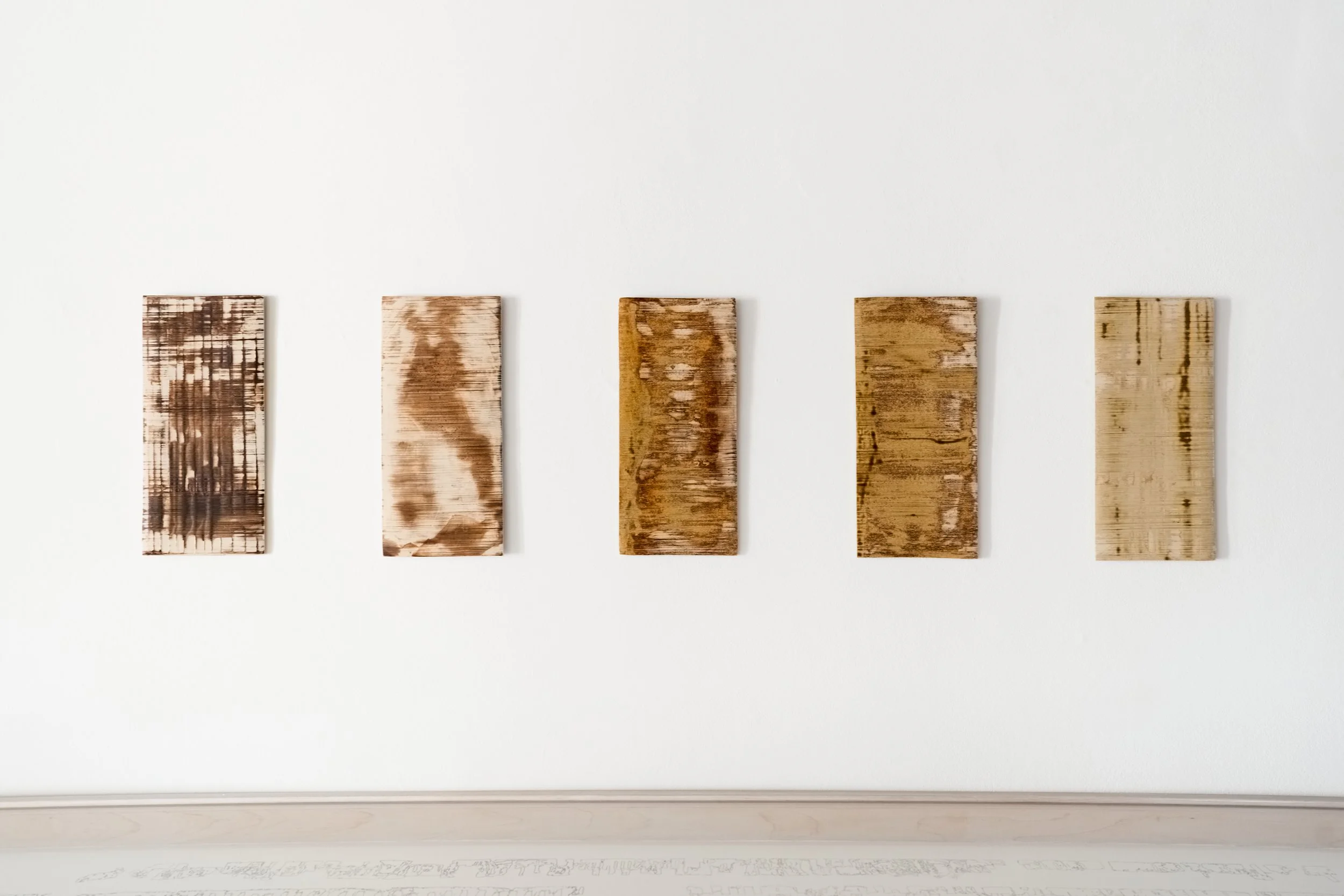Leah Raintree: Legible Earth
Reynolds Gallery, Richmond, VA
January 10 – March 7, 2025
Leah Raintree: Legible Earth engages the collection at Columbia University’s Lamont-Doherty Core Repository and their study of climate change. Raintree began dialogue with Core Repository scientists in 2019, inspired by parallel interests in the interpretation of geologic time. In these conversations, scientists described the Earth as a record keeper, preserving eons of information that can be read, compressed below the ocean’s floor. For the exhibition, Raintree presents drawings and ceramics that incorporate deep ocean sediment from the Core Repository directly into artworks.
Legible Earth: Score and Legible Earth: Script are interrelated drawing series that use deep ocean sediment from the North Atlantic and Southern Oceans, areas that allow scientists to monitor Arctic and Antarctic ice sheet loss. Treating the sediment as a pigment in printmaking inks, Raintree first produced monoprints followed by subsequent graphite drawings on top. While the drawings suggest complex systems and objective analysis, Raintree allows subjectivity and responsiveness to guide her working process, offering parallel methods of understanding expansive timeframes through mark-making, attention, and the body.
A large scroll drawing and series of tablet-like ceramic works are also included in the exhibition. Scaled to the hand and recalling scores, pages, maps, and other notational objects of knowledge, each emphasizes Raintree’s long-standing interest in the perception of geologic time, interpreting the physical history of the Earth through the limits of the human body. The scroll drawing VM29-191PC is a one-to-one hand rendering of the “working half” of a decommissioned sediment core that led scientists to early understandings of climate change. As scientists sampled from the core, new forms emerged to create an artifact of the scientific process, while reflecting attempts to understand ourselves within a rapidly changing planet. Similarly, a series of ceramic tablets play with the notion of the Core Repository serving as a “mud library,” with deep ocean sediment from around the world used as a ceramic glaze on porcelain tablets.
This project was supported by various scientific and cultural institutions. Raintree wishes to thank Columbia University’s Lamont-Doherty Earth Observatory and the Core Repository Staff, the Lower Manhattan Cultural Council, and the Lower East Side Printshop.













